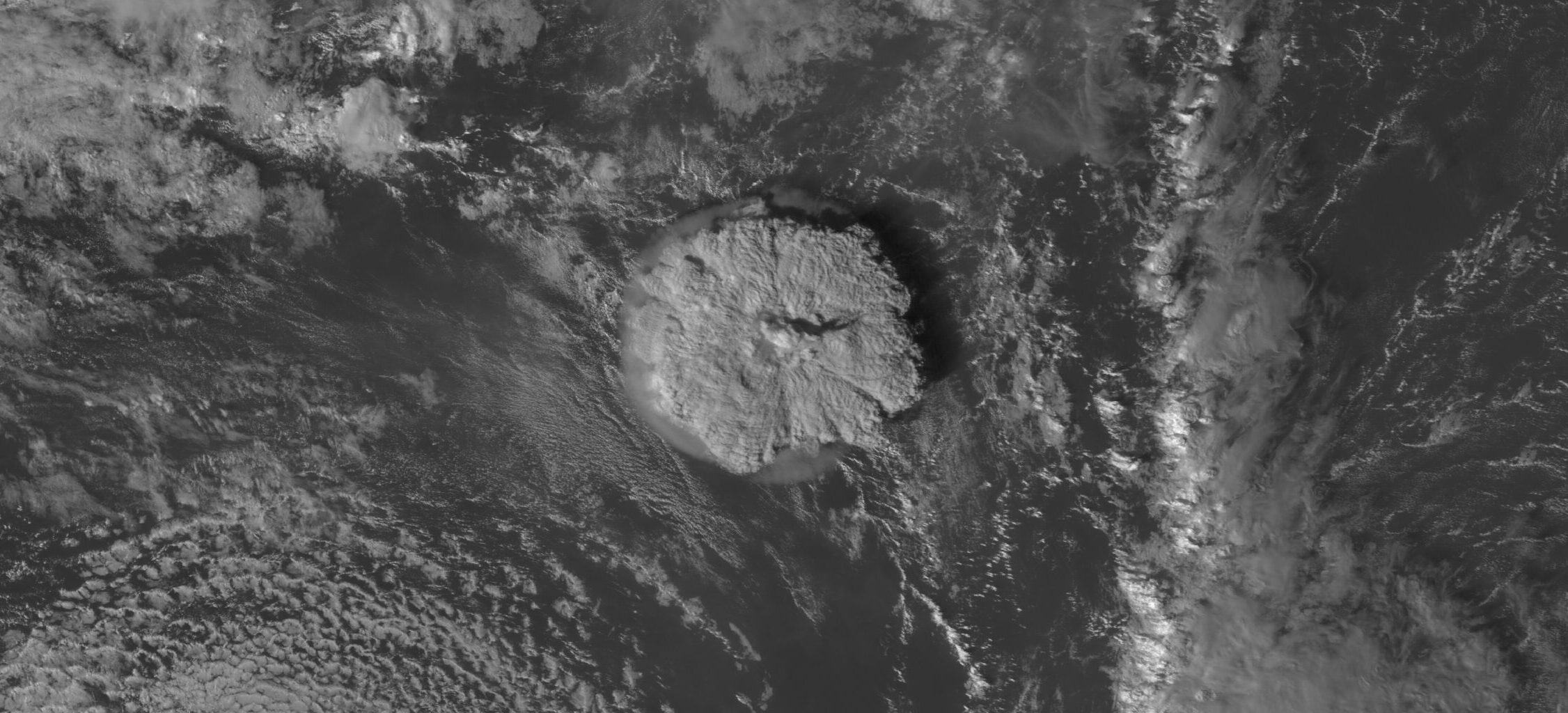The 2022 Hunga-Tonga Hunga-Ha’apai volcanic eruption shot out an unprecedented amount of water vapour into the sky, reaching heights of up to 55km and depleting 5% of the ozone layer in some regions in just one week.
New research published in the journal Science details balloon measurements taken all the way over near Réunion Island in the Indian Ocean to understand how volcanic eruptions influence climate and ozone chemistry. The authors say the increased humidity in the stratosphere led to a series of interactions between other components shot out from the volcano that ultimately broke down ozone over the tropical south-western Pacific and Indian Ocean regions.
The SMC asked experts to comment on the report.
Dr Laura Revell, Associate Professor, School of Physical and Chemical Sciences, University of Canterbury, comments:
“Major volcanic eruptions can inject gases and particles into the stratosphere (approximately 15-50 km above Earth’s surface) where the protective ozone layer resides. It is fairly common to see short-term ozone losses following a major eruption as a result of reactions involving volcanic aerosol and chlorine.
“Scientists would usually combine satellite measurements with modelling to understand how the ozone layer is affected by an eruption. In this study, the researchers launched balloons carrying scientific instruments to understand what was happening inside the volcanic plume as it was carried away from the volcano. They did this from Réunion Island in the Indian Ocean and obtained a highly detailed data set. Not only that, but they started their field campaign a mere five days after the eruption. Anyone who has been involved in event planning before, from a scientific field campaign to a child’s birthday party, will appreciate the effort that went into making this happen.
“The Hunga Tonga-Hunga Ha’apai eruption was surprising because, as has been reported before, it injected such large quantities of water vapour into the stratosphere (10% of the amount of stratospheric water vapor prior to the eruption). The measurements made in this study show that the stratospheric cooling from the water vapour helped the ozone loss processes involving volcanic aerosol to become more efficient. Ozone decreased rapidly by 5% in just one week over the tropical south-western Pacific and Indian Ocean. This is a significant amount, but not as large as the Antarctic ozone hole, where around 60% of the ozone layer is depleted between September and November each year.
“Overall, the study is a fascinating snapshot of what happened in the stratosphere in the aftermath of the eruption. However, it’s not over: the increased stratospheric water vapour may linger for several years yet. Time – and continued atmospheric monitoring – will tell.”
No conflicts of interest.
Dr Olaf Morgenstern, Principal Scientist – Atmosphere and Climate, NIWA, comments:
“The Hunga-Tonga Hunga-Haapai eruption was the biggest eruption of the satellite era, in terms of explosive power, altitude of the plume, and particularly in how much water it injected into the stratosphere. Usually there are roughly four million water molecules per million in the stratosphere, and the volcanic plume contained up to 300. The authors show that this massive local enhancement of water caused substantial impacts on atmospheric chemistry, increased ozone loss, both due to gas-phase chemistry and in association with the enhanced volcanic aerosol.
“As a result, some highly unusual ozone depletion happened in the tropics in the aftermath of the eruption, especially given the generally small variability of ozone in that part of the world.
“As a result of these observations, the scientific community has been expecting some unusual polar ozone depletion to happen after the volcanic material reached the Antarctic. It did not affect the 2022 ozone hole season because the material did not make it to the pole in time. The 2023 ozone hole season, contrary to expectations, has not been unusual. The reasons for Nature not playing ball I’m sure will be explored.
“This article focuses on the immediate consequences where totally unprecedented conditions (at least as far as records of stratospheric composition go) caused large, interesting, and scientifically relevant shifts in atmospheric composition that advance our understanding of atmospheric chemistry more generally.
“In particular, the speed of the observed ozone depletion challenges our understanding of the chemistry occurring on the surfaces of these particles and droplets. Also any potential role for halogen in the plume (where halogens are constituents of sea salt which was possible injected into the stratosphere) remains to be further investigated.
“The study is the culmination of an ongoing international effort to elucidate the impact of the volcano on atmospheric chemistry and climate.”
No conflicts of interest.
